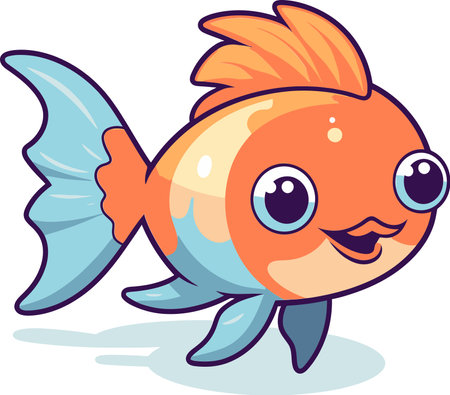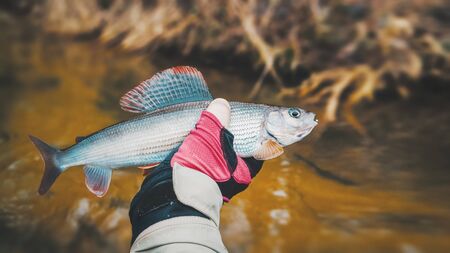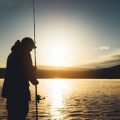Introduction: Why Beginner-Friendly Fishing Spots Matter
When youre new to fishing, choosing the right spot can make all the difference between an unforgettable adventure and a frustrating day. Across the United States, there are countless fishing locations, but not all are suited for beginners. Thats why beginner-friendly fishing spots are so important—they offer easy access, clear rules, and a welcoming atmosphere that helps newcomers feel comfortable. These spots often provide convenient parking, clean restrooms, and family-friendly amenities, ensuring everyone has what they need for a successful outing. Safety is another key factor; calm waters, well-marked areas, and on-site staff or rangers help keep things stress-free. Most importantly, these places are stocked with fish that are easier to catch, giving first-timers a real shot at landing something on their line. If youre just starting out or introducing someone else to the joys of fishing, picking the right location sets you up for success and encourages a lifelong love for this classic American pastime.
Key Features of a Good Beginner Fishing Spot
When it comes to fishing for the first time, choosing the right spot can make all the difference. Across the United States, beginner-friendly fishing locations share several important features that help newcomers feel comfortable and successful from the start. Below are some key elements to look for when picking your next fishing destination:
| Feature | Description | Why It Matters |
|---|---|---|
| Clear Signage | Well-marked entrances, posted rules, and maps of the fishing area. | Makes it easy to understand where to fish legally and safely, reducing confusion for beginners. |
| Easy Shoreline Access | Gentle banks, docks, or piers designed for safe and simple entry. | Ensures anyone—including families and kids—can reach the water without difficulty or special gear. |
| Rental Gear Available | On-site shops or kiosks offering rods, reels, bait, and other essentials. | Lets beginners try out fishing without investing in expensive equipment up front. |
| Local Guidance | Access to rangers, instructors, or friendly locals who offer tips and instruction. | Boosts confidence and helps new anglers learn best practices quickly. |
| Stocked Waters | Lakes or ponds regularly supplied with fish such as trout, catfish, or bass. | Increases chances of catching fish, making the experience rewarding and memorable. |
The best beginner fishing spots usually combine several of these features. For example, many city parks across America have designated family fishing lakes with accessible docks, rental gear stands, clear instructions posted at every entrance, and staff on hand to answer questions. State parks frequently offer workshops or “learn to fish” days where local experts provide hands-on guidance. Stocked ponds are especially popular because they almost guarantee you’ll get a bite—making them ideal for first-timers looking for quick success. When searching for your own starter spot, keep an eye out for these features to ensure a stress-free and enjoyable day outdoors.

3. Top Family-Friendly Lakes and Ponds
If you’re just starting out or bringing the whole family along, lakes and ponds in city parks, state parks, and local community areas are your best bet for a laid-back fishing experience. These spots are designed to be accessible, safe, and fun for anglers of all ages and skill levels. Across the United States, many of these waterbodies are regularly stocked with easy-to-catch species like bluegill, sunfish, catfish, and rainbow trout—ideal targets for beginners looking to reel in their first catch.
City Park Favorites
Many American cities have invested in urban fishing programs, turning park ponds into prime fishing destinations. Places like Central Park’s Harlem Meer in New York City or Lincoln Park Lagoon in Chicago offer hassle-free access with nearby parking, restrooms, and picnic areas. These spots make it easy to squeeze in a quick afternoon of fishing without venturing far from home.
State Park Standouts
State parks across the country feature well-maintained lakes that are perfect for families. Lake Johnson in Raleigh, North Carolina and Lake Perris in Southern California both boast gentle shorelines, accessible piers, and on-site bait shops. Many state parks even offer loaner rods and host “learn to fish” clinics—making them welcoming places for first-timers.
Community Fishing Areas: Hidden Gems
Don’t overlook smaller community ponds, often managed by local wildlife agencies. These ponds, such as Tom Bass Regional Park Pond in Houston or Twin Ponds in Seattle, are usually stocked multiple times a year and come equipped with benches, shade structures, and playgrounds nearby. It’s all about convenience and comfort for families who want to spend quality time outdoors without roughing it.
Why Choose Family-Friendly Lakes and Ponds?
These accessible waters take the stress out of learning how to fish. There’s no need for a boat or specialized gear—just grab a basic rod and some worms or corn for bait. Most importantly, these locations foster a friendly atmosphere where everyone is welcome, making them some of the best beginner-friendly fishing spots across the United States.
4. Coastal Beginner Spots for Saltwater Fishing
If you’re itching to try your hand at saltwater fishing, the U.S. coastline has a wealth of beginner-friendly spots that cater to both locals and travelers. From bustling piers to scenic jetties, these locations offer easy access, rental gear options, and plenty of opportunities to hook into exciting species—no boat required! Let’s spotlight some top coastal venues across Florida, California, and the Carolinas that are perfect for new anglers.
Florida: Sunshine State Hotspots
Florida is practically synonymous with fishing, and its public piers make it incredibly easy to get started. The Daytona Beach Pier and Naples Pier are famous not just for their views but also for their welcoming vibes and family-friendly amenities. You’ll find bait shops right on-site, helpful staff, and lots of other beginners around to swap tips with.
California: West Coast Classics
California’s lengthy coastline boasts iconic piers like the Santa Monica Pier and Oceanside Pier. These locations allow you to cast for surfperch, mackerel, or even halibut—all while taking in classic Pacific sunsets. Local tackle shops often rent out rods and sell day passes, so you can keep things simple and stress-free.
The Carolinas: Southern Hospitality Meets Saltwater Action
North and South Carolina both feature legendary fishing jetties and piers such as Apache Pier in Myrtle Beach (the longest wooden pier on the East Coast) and Johnnie Mercers Pier in Wrightsville Beach. These spots are known for friendly regulars, clean facilities, and a laid-back coastal atmosphere that’s ideal for first-timers.
Coastal Saltwater Fishing Spots At A Glance
| State | Location | Type | Best For Beginners? |
|---|---|---|---|
| Florida | Daytona Beach Pier | Pier | Yes – Rentals & Bait Available |
| Florida | Naples Pier | Pier | Yes – Family Friendly |
| California | Santa Monica Pier | Pier | Yes – Tackle Shops Onsite |
| California | Oceanside Pier | Pier | Yes – No License Needed on Public Piers |
| N. Carolina | Johnnie Mercers Pier | Pier | Yes – Clean Facilities & Rentals |
| S. Carolina | Apache Pier (Myrtle Beach) | Pier | Yes – Longest Wooden Pier East Coast |
A Few Tips Before You Go:
- Check local regulations—some public piers don’t require a fishing license, which is perfect for spontaneous trips!
- Piers often have rod rentals and bait available right there—just bring yourself and maybe a cooler for your catch.
- Dawn and dusk are prime times for bites; arrive early to secure a good spot.
The American coastlines are packed with accessible fishing gems. Whether you’re vacationing or just looking for an easy weekend adventure, these coastal venues make saltwater angling approachable—and a whole lot of fun—for everyone.
5. Midwest Rivers and Streams for First-Timers
The Midwest is often called the “Heartland of America,” and it’s also home to some of the most welcoming waters for beginner anglers. If you’re new to fishing, the region’s easily accessible riverbanks and gentle streams make it a prime destination to learn basic fishing skills without feeling overwhelmed.
Easy Access Along Scenic Riverbanks
Rivers like the Mississippi in Minnesota, Illinois’ Fox River, and Ohio’s Maumee River offer plenty of public access points—think park trails, fishing piers, and convenient parking. These spots often have gradual banks and calm currents, perfect for practicing your first casts or setting up with a simple bobber rig.
Top Beginner-Friendly Streams
- Wisconsin’s Kettle Moraine State Forest: With shallow streams full of panfish and bass, this area is ideal for families and first-timers alike.
- Iowa’s Turkey River: Known for its mild flow and regular trout stocking, it’s a favorite for those just learning how to bait a hook.
- Missouri’s Current River: Crystal-clear water and gravel bars provide both easy wading opportunities and great scenery for your first fishing adventure.
What Makes Midwest Waters Ideal?
The friendly pace of life in the Midwest extends to its waterways. You’ll find community-supported clean-up programs, local tackle shops ready to share advice, and even free fishing weekends where no license is needed. Whether you’re after bluegill, sunfish, or smallmouth bass, these rivers and streams set the stage for a safe, enjoyable introduction to angling in true Midwestern style.
6. Useful Tips for Your First Fishing Trip
Get Your Fishing License
Before you cast your first line, make sure to check the fishing license requirements for the state you’ll be visiting. Most states require a fishing license, even for beginners and kids. You can usually purchase a day pass or an annual license online or at local sporting goods stores. Some states also offer free fishing days where no license is needed—perfect for testing the waters!
Choose Basic Gear
You don’t need expensive equipment to get started. A simple spinning rod and reel combo, some hooks, bobbers, sinkers, and live bait or basic lures will do the trick at most beginner-friendly spots. Local tackle shops are great places to ask about what works best in that area and pick up any last-minute essentials.
Know the Local Regulations
Every fishing spot has its own rules about seasons, size limits, and how many fish you can keep. Look up local regulations on the state’s wildlife agency website or posted signs at the fishing site. Respecting these rules helps keep fish populations healthy and ensures a good experience for everyone.
Practice Good Fishing Etiquette
Be courteous to fellow anglers by giving them plenty of space along the shore or pier. Clean up after yourself—leave no trash or fishing line behind. If you catch a fish that’s too small or not in season, release it gently back into the water. Being respectful of nature and other people goes a long way toward building a positive community around America’s best beginner fishing spots.
Bonus: Learn Before You Go
If it’s your first time out, take a few minutes to watch instructional videos or read up on basic casting techniques. Many local parks and recreation departments also offer beginner classes—an excellent way to gain confidence before heading out to one of the United States’ top beginner-friendly fishing locations.


